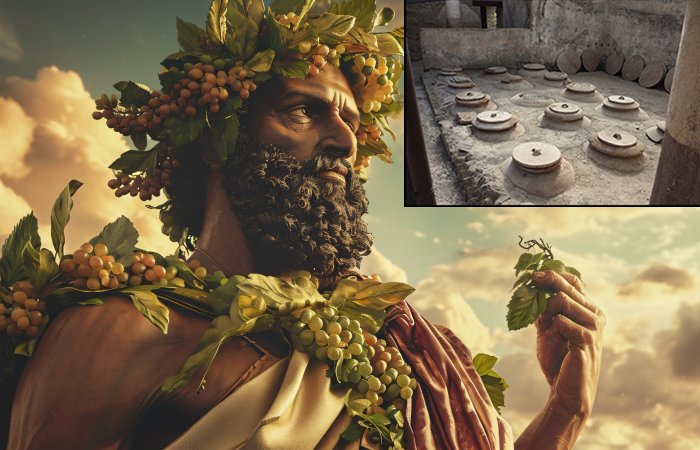Jan Bartek - AncientPages.com - Ancient Romans loved wine. It is estimated that an average male in the ancient Roman Empire consumed about a liter or more of diluted wine daily. The wine symbolized civilized behavior and was widely used as a drug, medicine, and ritual beverage. Ancient Romans venerated wine and even worshiped the god Bacchus, who was devoted to wine and merriment. Ancient sources continuously attest that it was a problematic drink when consumed by women.
The wine god Dionysus (Bacchus). Credit: Adobe Stock - Rimsha
In Greco-Roman myths God Bacchus, more known as Dionysus is credited with giving grapes to humans and teaching the art of wine-making.
Many have wondered what ancient Roman wine tasted like, and a new study published in Antiquity has some answers. By analyzing dolia, Roman clay jars used to manufacture, ferment, and store ancient wines, experts could discover and explain the ancient flavors and the processes that created them.
"The widespread and extensive use of these vessels is arguably the most striking feature of Roman winemaking, yet the specifics of their role in vinification (the conversion of grape juice into wine through fermentation), as well as their influence on the organoleptic (visual and sensory) characteristics of Roman wine, remain ill-explored," the scientists write in their paper.
Whether Roman wine was bitter, sweet, fruity, or earthy has remained unknown until now. According to the study, ancient Roman wine was spicy and smelled like toast! The results may be surprising to some and "change much of our current understanding of Roman winemaking," the science team said.
The fact Dolia vessels were partly buried underground and sealed during the wine-making processes is one of the factors that would have contributed to the flavor palette of the finished product.
" Flor growth depends on temperature (growth rates rise with increasing temperature), and weak wines exposed to the warm open air would have built flor too quickly, causing the development of watery wines and acetic fermentation. Colder underground conditions slowed down flor formation and inhibited alcohol loss, though this was less of a problem for stronger wines, as the alcohol loss was insufficient to start acetic fermentation," the paper informs.
As a result of this process and the addition of natural yeasts, Roman wine would have taken on a "slightly spicy" taste and given off the aroma of "toasted bread, apples, roasted walnuts and curry," researchers said.
The dolia defossa wine cellars of (a) Regio II Insula 5 (Pompeii) and (b) Villa Regina (Boscoreale) (photographs by E. Dodd, courtesy of the Ministero della Cultura – Parco Archaeologico di Pompei); and (c) Tortoreto Muracche (Abruzzo) (photograph by Francesco Pizzimenti, courtesy of Soprintendenza Archeologia, Belle Arti e Paesaggio per le province di L'Aquila e Teramo).
The science team also examined the color of the wine. Whether Romans prefer red or white wine is a subject that has often been debated.
"Contrary to widespread belief, it seems unlikely that most vinification in antiquity was 'white' in the sense of its modern meaning," the scientists concluded.
"Instead, most grapes—regardless of their berry colour—were vinified according to what we would today call red-wine vinification, with all solids present at least during primary fermentation. This explains in large part the wide colour range of ancient wines, as attested in the ancient sources, and the ability of Roman vintners to make stable wines in an era without artificial additives and preservatives.
See also: More Archaeology News
It is also clear that dolia were no ordinary class of pottery, but highly specialised vessels whose size, shape, materiality and buried setting all contributed decisively to the nature and quality of ancient wines. In addition, by considering the key role of natural yeasts, and in particular flors, we have argued that Roman wines were often characterised by aromas of sotolon, and that this specific organoleptic quality was considered an important feature of fine-quality wine," the researchers said.
This confirms what has been stated about Roman wine in ancient sources where the colors white, reddish-yellow, blood red and black are mentioned.
The study was published in the journal Antiquity
Written by Jan Bartek - AncientPages.com Staff Writer
